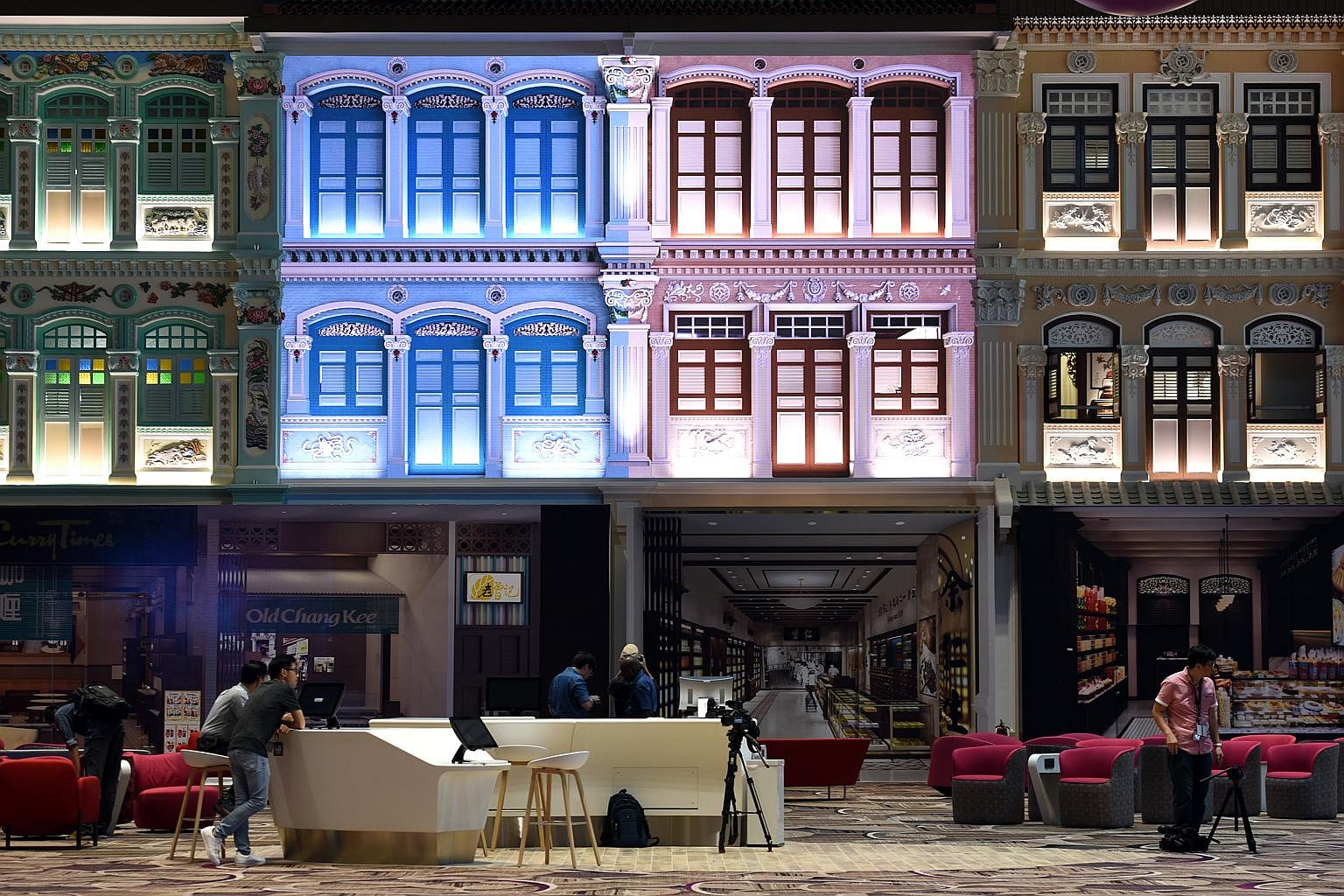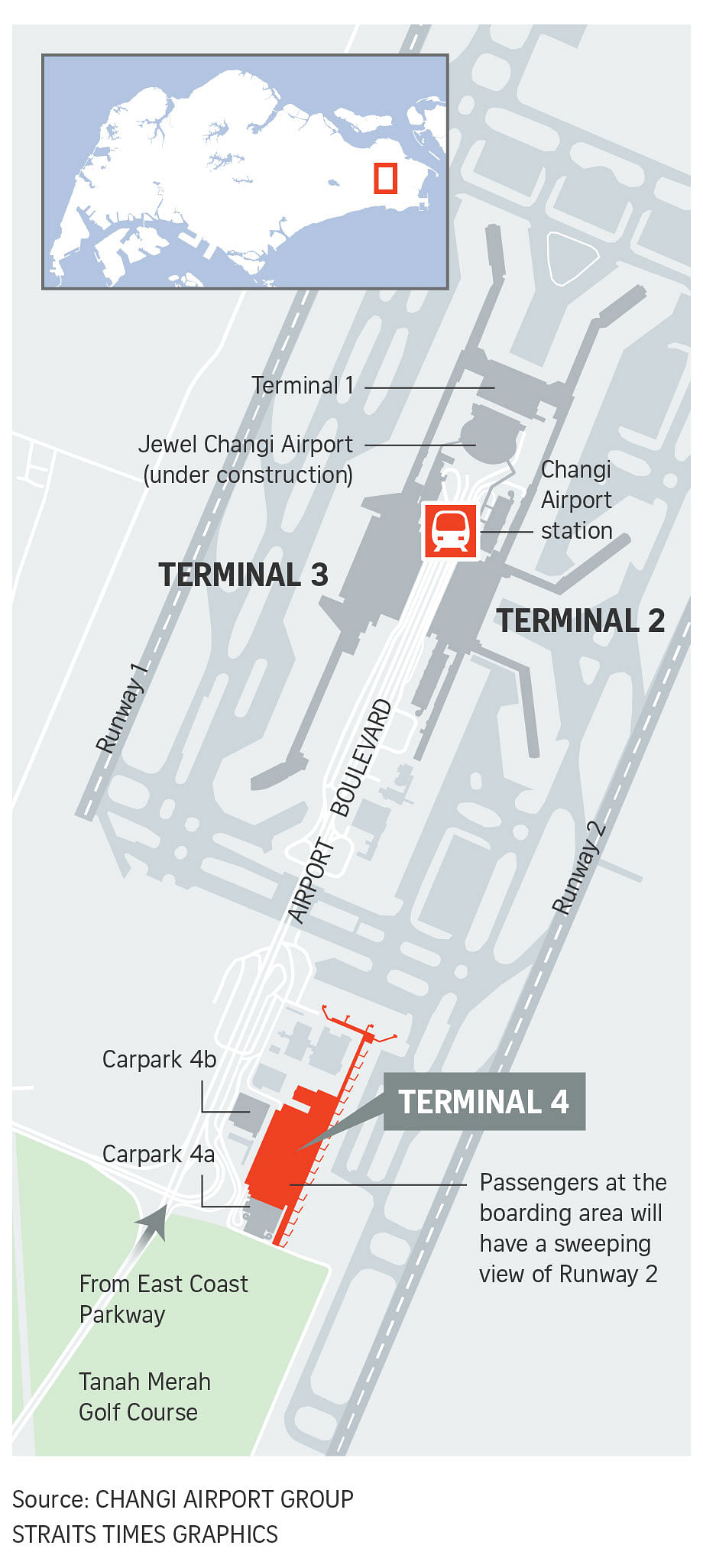SINGAPORE - Changi Airport's Terminal 4 has a new moving art sculpture that calls to mind Terminal 1's Kinetic Rain installation.
Petalclouds, an aluminium installation, stretches 200m and can be seen from almost anywhere in futuristic Terminal 4.
The moving sculpture by German-based ART+COM - the same design firm behind the Kinetic Rain aluminium droplets at Terminal 1 - comprises six "clouds", each consisting of 16 petal-shaped aluminium frames suspended from wires in motion.
These have been choreographed to form various patterns, over the rhythms of classical music composed by Bafta award-winner Olafur Arnalds.
Petaclouds is one of several installations in Terminal 4 which draw on technology and typify its push to become Changi Airport's "flagship terminal for innovation".
Managing director of Changi Airport Group's airport operations management, Mr Jayson Goh, said that the art features in the terminal were to help "distract passengers from the pace of the airport" and create a less stressful environment.
Said Ms Poh Li San, vice-president of Changi Aiport Group's T4 programme management office: "T4 was conceived with the vision to rethink travel, push boundaries and break new ground. Through innovative concepts of operation and terminal design, we sought to address our capacity needs as well as improve efficiency and manpower productivity."
While there is no physical safety net for Petalclouds' petals - each of which weighs 40kg - Ms Poh said that passengers need not worry about their safety.
The moving petals grind to a halt immediately when the system detects a deviation from normal movement, and there are a number of cables supporting each petal, she said.
Cables supporting the petals have a factor of safety of 40, she added. This means the cables are 40 times stronger than what they would need to be for their intended load.
The orchid petal is an ubiquitous motif in Terminal 4, appearing in the Petalclouds installation, and on carpets, skylights and even dustbins.

Ms Poh said that due to space limitations, the airport adopted "a boutique approach" in its interior design, aimed at creating "a cosy, comfortable space".
She added: "We want the terminal to be not just modern and functional, but one that is fun and uplifts (passengers') moods."
While transparent glass walls make the terminal seem more spacious, technology also does the trick: LED screens disguised as murals and shophouse facades later expand into panoramas and roomy interiors.

The centralised security screening area has a 70m by 5m LED screen - called the Immersive Wall - that starts out as what appears to be a convincing wood carving mural, before it goes on to display Singapore's skyline, Asean landmarks and a whimsical animation of how baggage is sorted.
The transit area's heritage zone features a row of Peranakan "shophouses" from the 1880s to 1950s.

Two of them conceal a 10m by 6m LED screen that doubles as a digital theatre stage for a six-minute "musical" by veteran composer Dick Lee.
Peranakan Love Story, which has no audible dialogue, tells the story of a romance between two musician-neighbours who fall in love.
It features Mr Adrian Pang, Ms Koh Chieng Mun, Ms Amy Cheng and Mr Benjamin Kheng, and includes a song, Bunga Sayang, from Mr Lee's 1994 musical Kampong Amber.
Mr Lee, who hails from a Peranakan background, said of the musical, which took two years to conceptualise: "My starting point was the most famous part of Peranakan culture - the wedding."
He added: "Without technology, this would have been impossible to create. The whole interior of the house was digitally designed - we could have as much detail as possible. The colour, the vividness of it, the little surprise at the end... that could only have been done digitally."





